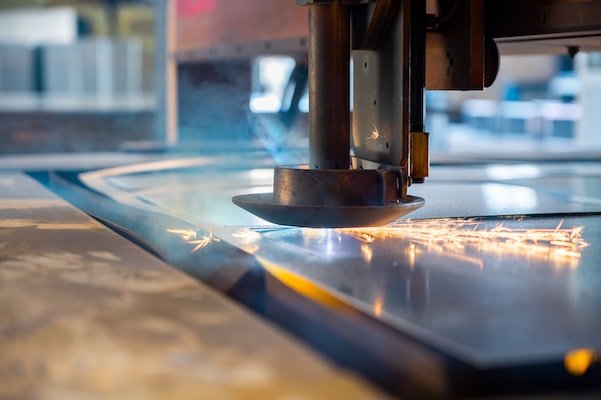Understanding the different types of steel can seem like a daunting and daunting task, especially when it comes to laser cutting. With so many different types of steel out there, it can be difficult to know which one is best for your particular application. This article will provide an overview of the most commonly used types of steel and the advantages and disadvantages associated with each one so that you can make an informed decision when it comes to laser cutting.
Types and grades of steel used in laser cutting
grade When it comes to laser cutting metal, there are many types of steel to choose from. It is important to understand the various types and grades of steel used in order to get the best results when laser cutting. When selecting steel for laser cutting, the most common types of steel used are mild steel, stainless steel, and aluminum.
Each has its own properties that make it suitable for a specific application. Mild steel is a strong, low-cost material that is easily formed and welded.
Carbon steel
machine When it comes to laser cutting, carbon steel is one of the most common types of steel used because of its high strength and affordability. Carbon steel is a mixture of iron and a small portion of carbon, typically ranging from 0.08-2.1%. Depending on the carbon content, different grades of carbon steel are produced, ranging from low carbon steel to high-carbon steel.
Low carbon steel is the most common type of steel used for laser cutting. It is characterized by its softness and ductility for easy laser cutting. Higher carbon content steel is also affordable, but its harder and more fragile surface makes it difficult to laser cut without causing cracks and warping.
Stainless steel
Stainless steel is one of the most common and popular materials for laser cutting. It is a type of steel that contains a minimum of 10.5% chromium content and forms a passive oxide surface layer that further protects it against corrosion. When laser cutting stainless steel, the high-energy beam literally melts the material, and when the molten material cools, it forms a precise and accurate cut.
The types of stainless steel best suited for laser cutting are 304, 316, and 416 grade.
Tool steel
Tool steel is one of the most commonly used metals for laser cutting. It is a type of high-carbon steel that is known for its strength and hardness. Tool steel is used for a variety of purposes, such as automotive parts, construction tools, surgical instruments, and cutting tools.
Its hardness makes it perfect for laser cutting since it can easily withstand extreme heat and pressure. Generally, tool steel is classified by its manufacturing process into four categories.
Alloy steel
metal When it comes to laser cutting metal, alloy steel is an incredibly versatile option – it’s a type of steel that is composed of a range of metals, usually including iron. Depending on the desired application, there are a range of different grades of alloy steel available. These grades are designed to suit particular applications, as each grade offers its particular combination of metals and properties.
Examples of some of the metal elements used include nickel, chrome, molybdenum, manganese, vanadium, silicon, and carbon.
Advantages of using laser cutting for steel
steel Laser Cutting is a common process for cutting different types of steel with precision and accuracy. Laser Cut Metals are becoming increasingly popular with manufacturers due to their high-precision capabilities and low-cost labour force when compared to traditional cutting methods. Laser Cutting can be used to cut any type of metal ranging from mild steel to stainless steel and also aluminum.
It can also cut through thicker materials like titanium and other exotic metals. When it comes to cutting steel, the advantages of using laser cutting are in the speed, accuracy, and flexibility.
Fast turnaround times
material When it comes to turning around projects quickly, one of the most important aspects of laser cutting is understanding the different types of steel that can be used. By understanding the different grades of steel, laser technicians can select the right material to achieve desired outcomes with the fastest turnaround times. When it comes to laser metal cutting, the type of metal used will depend heavily on the project.
Precision and accuracy
process When it comes to laser cutting steel, precision and accuracy are key. However, the type of steel that is used can also play a role in how successful the job will be. Knowing what grade of steel to use is essential to making sure that the job is done quickly and accurately.
One of the most important factors to consider when selecting the type of steel for laser cutting is the hardness and strength of the metal. Mild steel, for instance, is one of the most common types used for laser cutting and is relatively easy to cut, although it does not have the strength and durability of more complex steel alloys.
Economic benefits
Using a laser for metal cutting has many economic benefits, especially when it comes to the different grades of steel. Different types of steel have different properties, including heat and corrosion resistance, formability, strength, hardness, and weldability. Depending on a project’s specifications, it may require one grade of steel or another, and laser cutting is an efficient and cost-effective way to cut various grades of steel.
One of the main benefits of laser cutting is that it eliminates the need for any specialty tooling, allowing for a faster setup time.
Considerations to make when choosing a steel grade for laser cutting
metal When it comes to laser cutting metal, not every type of steel lends itself equally well to the process. Different grades of metal have different characteristics that affect how easily they can be cut, what kind of finish can be achieved, and even their general durability. Knowing the different types of steel available, and their properties, can help you make the right choice when working with your specific project requirements.
Different grades of steel have varying levels of strength, firmness, weldability, and machinability. Among some of the most commonly used grades are carbon steels, stainless steels, and high-strength low-alloy steels.
Strength and hardness requirements
steel When it comes to laser cutting various grades of steel, it is important to understand the strength and hardness requirements of each type of steel. The type of metal that is used for laser cutting can greatly affect the parts that are produced. There are several grades of steel that are commonly used for laser cutting.
The most basic grade of steel that is commonly used for laser cutting is 1018. This grade of steel is considered a mild steel and is relatively easy to laser cut. However, it does not have the strength and hardness required for more complicated applications.
Cost-effectiveness
When it comes to laser cutting, one of the most important factors is cost-effectiveness. Different types of steel can offer different levels of cost-efficiency, so it’s important to understand which grade of steel is best for your laser cutting needs. The most cost-effective type of steel for laser cutting is mild steel.
Mild steel is a low cost steel that is relatively common, making it a great material for laser cutting.
Intended application
When understanding the different types of steel for laser cutting, the most important thing to consider is the intended application. By understanding the application, you can better determine the grade of steel that can be used for the project. Each grade of steel has its own unique set of qualities that make it more suitable for certain projects.
For example, mild steel is a relatively low-cost grade of steel that is great for cutting various grades of steel sheet materials. It is popular because it is extremely malleable and can be worked into a variety of shapes and sizes.

Summary of the different types of steel used in laser cutting
steel When it comes to laser cutting, there are a variety of different types of steel for you to consider. Understanding the differences between them will help you make an informed decision when selecting the best metal for your project. One of the most common types of steel used in laser cutting is mild steel.
This type of steel is economical, easy to manipulate, and great for laser cutting applications like creating small parts or intricate patterns. Because it is a lower-cost option, mild steel is often the preferred choice for prototyping and short-run production. Another popular choice is stainless steel.
Benefits of laser cutting steel
Laser cutting steel is an efficient and precise way to create intricate shapes. It utilizes a laser beam to make complex cuts in a variety of metals with a beam width of 0.1 millimeters. Laser cutting machines are commonly used for cutting thin sheets of steel, aluminum, brass, and other materials.
When it comes to laser cutting steel, there are various types available with varying properties and benefits. Generally, carbon steel is the most commonly used type of steel for laser cutting and is a strong and affordable option.
Final considerations to make when selecting the right steel grade for your application
When it comes to selecting the right steel grade for your laser cutting application, there are several important considerations to make. First, you’ll need to consider the types of steel available. Steel can be classified into four major categories: carbon, alloy, tool, and stainless steel.
Each type has different properties and is suited for different purposes. Carbon steel is the most common type of steel and is generally the most economical. It is commonly used for applications that require relatively low strength and corrosion resistance.
Alloy steel is usually more expensive than carbon steel and is made from a combination of iron and other materials including carbon, nickel chromium, and molybdenum.

What is the thinnest steel you can laser cut?
When it comes to laser cutting steel, you may be wondering what the thinnest material you can work with is. It depends on the grade of steel you’re using. Different grades of steel dictate what the thinnest sheet metal you can cut is.
When laser cutting metal, you’ll want to use a grade of steel that works well with a laser but also gives you the desired outcome.

Conclusion
steel In conclusion, understanding the different types of steel for laser cutting is integral for product designers and fabricators alike. As there are many variations in the complexity of laser cutting, knowing the type of steel can help to determine the feasibility of the design and the quality of the end product. Different grades of steel have different properties, which can affect the speed and precision of the laser cutting process, as well as its cost.
Mild steel, stainless steel and tool steel are the most commonly laser cut metals, while other metals like aluminum and copper can also be laser cut.

